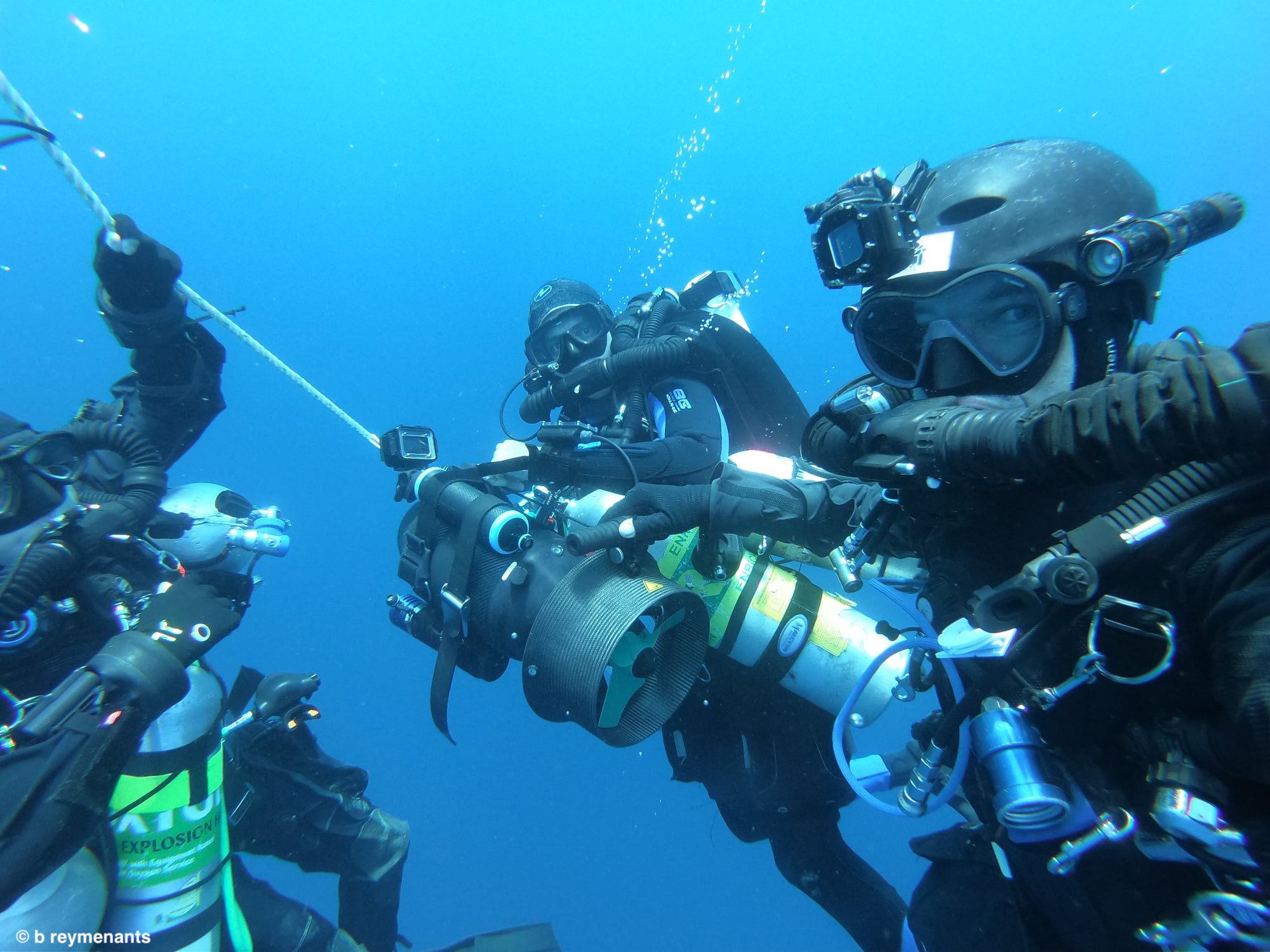Divers discover lost WWII submarine wreck off Southeast Asia
It sank after being attacked by Japanese aircraft.

Divers in Southeast Asia have located the lost wreck of what's thought to be a U.S. Navy submarine that sank in 1943 after it was attacked by Japanese aircraft.
The submarine wreck — almost certainly that of USS Grenadier — was found in a search of the northern end of the Straits of Malacca, between the Malay peninsula and Sumatra.
The divers cross-referenced military records of three submarines sunk in the area during World War II with the possible locations of wrecks reported by fishermen who had snagged nets on submerged obstacles, said team member Lance Horowitz, an Australian based on Thailand's southern island of Phuket.
Related: Photos: WWII shipwrecks found off NC coast
The other members of the team are Ben Reymenants, a Belgian diver based in Phuket who also helped rescue a youth soccer team from a cave in Thailand in 2018; and Frenchmen Jean Luc Rivoire and Benoit Laborie, who are both based in Singapore.
The team spent two boat trips and several days searching the most likely areas with sonar equipment, and located a wreck in October last year at a depth of 280 feet (85 meters) — an extreme depth for diving that required a special mix of oxygen, nitrogen and helium for them to breathe, and only let them stay a few minutes.
"We didn't really have too much time," Horowitz told Live Science. "We weren't able to swim around the whole wreck … it kind of disappears off in either direction."
Get the world’s most fascinating discoveries delivered straight to your inbox.
After five more dives since, Horowitz and his team have established the wreck as that of a military submarine with all its hatches open, sitting on the seafloor; — the latest measurements of its conning tower, hatches and hull show it must be the Grenadier.
The team is now waiting for formal confirmation of their find from the U.S. Navy, Horowitz said.





Stricken submarine
USS Grenadier, named after a type of fish like many U.S. subs, joined the American submarine fleet in the Pacific Ocean after the Japanese attack on Pearl Harbor in December 1941.
It helped defend the island of Midway in June 1942 — one of the decisive naval battles of the Pacific during World War II — and later patrolled the coasts of Southeast Asia, according to the U.S. Naval History and Heritage Command.
On April 20, 1943, the Grenadier was closing on two Japanese cargo ships near Phuket, intending to sink them, when it was spotted by a Japanese aircraft. The submarine crash-dived to a depth of around 120 feet (36 m), but it was hit by a torpedo dropped from the aircraft, which knocked out its power and started fires onboard.
Related: Photos: WWI-era German submarine wreck discovered off Scotland coast
The stricken submarine fell to the seafloor, while its crew tried to make repairs and put out the fires; it only surfaced after dark, 13 hours later, but it was too badly damaged to move.
The sub's captain, Lt. Cmdr. John Fitzgerald, hoped an improvised sail would bring the sub close enough to shore that the crew could escape into the jungle; but it was soon spotted by Japanese ships and aircraft.
After a fierce battle with the sub's guns on the surface, Fitzgerald ordered that the Grenadier be scuttled; the crew opened all its hatches and vents, and the sub quickly sank to the bottom. Its location was lost until the dive team discovered it last year.
Prisoners of war
That wasn't the end of the story for the crew of the Grenadier, however. The Japanese ships picked up all 76 crew men and took them to a commandeered Catholic school near Penang where they were questioned, beaten and starved, according to historical accounts.
In the book "The Silent Service in World War II" (Casemate Publishers, 2012), one of the Grenadier sailors alleged their Japanese captors tortured the crew, including breaking their fingers and pricking them with bayonets, to get them to talk.
Four of the Grenadier crew died in captivity, and the rest survived until the end of the war in Japanese prison camps. The last survivor of the Grenadier died last year, Horowitz said, adding that he and his team gathered their information from the families of the crew members.
The wreck has now become a haven for sea life. "It's in an otherwise barren part of the seafloor," he said. "It is really thriving, covered with coral and giant fish."
The team hopes to make further dives on the wreck and eventually search for two other World War II submarines that sank in the area: the British subs HMS Stonehenge, which sank in 1944, possibly after hitting a mine; and HMS Porpoise, which sank in 1945, after it was bombed by a Japanese aircraft.
"We'll use similar techniques that we used to find the [Grenadier]," Horowitz said. "We might get lucky enough to find another one."
Originally published on Live Science
Tom Metcalfe is a freelance journalist and regular Live Science contributor who is based in London in the United Kingdom. Tom writes mainly about science, space, archaeology, the Earth and the oceans. He has also written for the BBC, NBC News, National Geographic, Scientific American, Air & Space, and many others.


